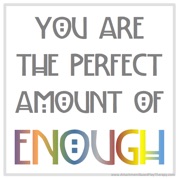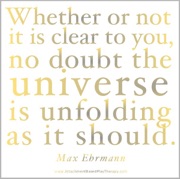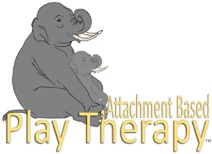
Attachment to Self
ABPT departs from the traditional understanding of attachment. We believe that existing models of attachment are ultimately disempowering, in that they all require an other - typically a caregiver - to ‘attach to.’ Whenever we require something of another person, we are, by definition, disempowered; we cannot take care of ourself around that which we require from the other. ABPT seeks to empower caregivers and children (of all ages!) to expand beyond the traditional confines of attachment theory and discover how to transform our relationships with ourselves and with others. Attachment is actually something we do within; attachment is actually about connecting with ourself. When we are attached to ourself, we are available to give attention to and receive attention from anyone, which is to say, we can connect with anyone. It is in a caretaker’s modeling attachment to him/herself that a child learns to attach to him/herself.
Emotional Continuums
ABPT works with 5 primary emotional continuums: sadness&inlove, fear&excitement, anger&passion, joy&pain and sexual&repulsion. Emotion is simply energy in motion (E-motion = energy in motion). When an emotion occurs, there are sensations in the body, little bits of energy that are moving. A typical emotional wave lasts about 90 seconds (when we can stay with it and allow it space to move without trying to make it go away).
Often times people feel threatened by their own emotions, and perceive that they cannot handle these emotions, which is what makes us want our emotions to go away. For many of us, when we think of anger we believe, “I can’t let my self get angry because that leads to rage.” Or, “I can let myself feel sad, because I don’t want to get depressed.” Or “If I let myself feel scared, I will get anxiety.” In actuality, it is from stuffing our feelings that they finally explode. Accepting our emotion and learning to trust we can handle our emotion, begins with developing an authentic relationship with our body and attending to the sensations.
Gratitude & Self-Acceptance
Our universe is in perfect equilibrium (meaning the condition of a system in which all competing influences are balanced) at all times and so is the human mind, yet we typically experience life as unbalanced (more pain then joy, more stressful then relaxing). When we are able to recognize the perfect order and have gratitude for everything we experience, we transform our life. In this transformation comes the certainty that we know what we need to know, we feel what we need to feel, we experience what we need to experience and ultimately we are perfect just the way we are.
Mindful Awareness
Mindfulness is the practice of coming back to the present moment. In ABPT mindfulness is critical, because in the present moment we can typically check in with ourselves and find that we are just fine and that we can handle what is happening. Yet, time and again, we leave the present for the past or the future where we tell ourselves stories about how something happened or will happen that we won’t be able to handle. Many of us live with a fantasy that life could or should be free of difficult emotion. Do you know anyone who doesn’t experience difficult emotion? Because we don’t. But you might say, “well I have more or she has less,” and feel justified. The truth is that we don’t find that helpful. What we find helpful is to start to understand that emotion is simply a sensation in the body (in the present moment) and typically (if we don’t die from it) we find a way to handle the difficult emotion. It is also helpful to shift the belief that things “should” be different from how they are or the perception that we shouldn't have to handle the difficult emotion or that we are not handling it well enough, fast enough, strong enough, easily enough, etc. If we are living, we are handling difficult emotions, and we can stop believing the story that we “shouldn’t” be feeling them or that we “should” be handling them differently.
Empowerment
In ABPT empowerment is about taking 100% responsibility for our emotions, as our own. We are seeking a paradigm shift from external responsibility for how we feel, to internal responsibility for how we feel. Anytime we allow someone else to be responsible for how we feel, we are, by definition, disempowered; we require the other to change/stop/start/do/say/be, in order to be ok. What we know to be true is that I can only control myself, so if I cannot control you, and I require something of you, I am in trouble - I am disempowered. The solution is to say, “These emotions are happening in my body. I better figure out how to soothe these feelings and my body.” Now I am empowered to take care of myself.
Authentic & Congruent Emotional Expression
Authenticity is about being transparent and genuine within ourselves about how we are feeling. Congruent Emotional Expression is about communicating our authentic experience in relationship. We are all human beings in relationship with other human beings. Unfortunately, the same way we often feel threatened by our own emotions, we also often feel threatened by other’s expression of their emotions. As a result, we develop relationship and communication strategies to avoid expressing our own emotions and also to avoid triggering emotions in others (especially those we are closest with). In addition, we are often confused and believe ourselves to be responsible for an emotion triggered in another while relating, using language like, he is mad at me, I made her sad, she scared me. When we believe we can handle our own emotions, believe we can handle other’s emotions, and stop taking responsibility for other’s emotions, we become able to be ourselves fully - authentic and congruent - in relationship.
© 2013 Gestal Holdings, LLC. All rights reserved.
Design by GlassWaltzVintage Hosted by Bluehost.com








